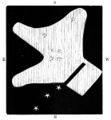Template:Selected anniversaries/September 12: Difference between revisions
No edit summary |
No edit summary |
||
| Line 39: | Line 39: | ||
File:Leo Szilard.jpg|link=Leo Szilard (nonfiction)|1933: [[Leo Szilard (nonfiction)|Leó Szilárd]], waiting for a red light on Southampton Row in Bloomsbury, conceives the idea of the nuclear chain reaction. | File:Leo Szilard.jpg|link=Leo Szilard (nonfiction)|1933: [[Leo Szilard (nonfiction)|Leó Szilárd]], waiting for a red light on Southampton Row in Bloomsbury, conceives the idea of the nuclear chain reaction. | ||
||1940: Cave paintings are discovered in Lascaux, France. | File:Lascaux_painting.jpg|link=Lascaux (nonfiction)|1940: [[Lascaux (nonfiction)|Cave paintings are discovered in Lascaux, France]]. | ||
||1952: Strange occurrences, including a monster sighting, take place in Flatwoods, West Virginia. | ||1952: Strange occurrences, including a monster sighting, take place in Flatwoods, West Virginia. | ||
Revision as of 15:57, 9 September 2018
1725: Astronomer Guillaume Le Gentil born. He will discover what are now known as the Messier objects M32, M36 and M38, as well as the nebulosity in M8, and he was the first to catalogue the dark nebula sometimes known as Le Gentil 3 (in the constellation Cygnus).
1900: Mathematician and academic Haskell Curry born. He will be known for his work in combinatory logic.
1932: American physicist and crime-fighter Arthur Compton publishes new class of Gnomon algorithm functions, based on the Compton effect, use the particle nature of electromagnetic radiation to detect and prevent crimes against mathematical constants.
1933: Leó Szilárd, waiting for a red light on Southampton Row in Bloomsbury, conceives the idea of the nuclear chain reaction.
2017: Dard Hunter, Glyph Warden wins Pulitzer Prize.





